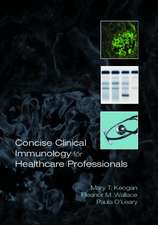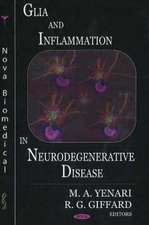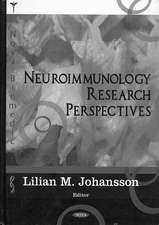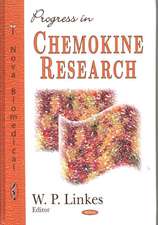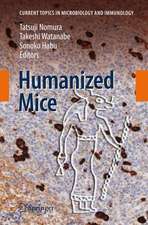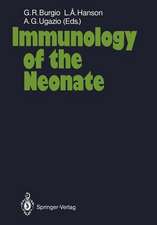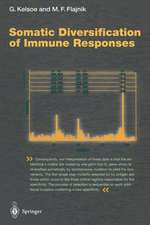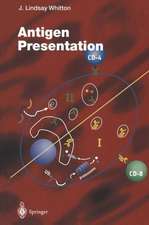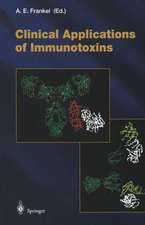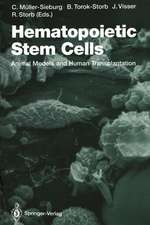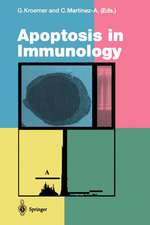Synthetic Immunology
Editat de Takeshi Watanabe, Yousuke Takahamaen Limba Engleză Hardback – 21 iun 2016
| Toate formatele și edițiile | Preț | Express |
|---|---|---|
| Paperback (1) | 971.42 lei 38-44 zile | |
| Springer – 6 iun 2018 | 971.42 lei 38-44 zile | |
| Hardback (1) | 990.03 lei 38-44 zile | |
| Springer – 21 iun 2016 | 990.03 lei 38-44 zile |
Preț: 990.03 lei
Preț vechi: 1042.15 lei
-5% Nou
Puncte Express: 1485
Preț estimativ în valută:
189.47€ • 197.08$ • 156.42£
189.47€ • 197.08$ • 156.42£
Carte tipărită la comandă
Livrare economică 10-16 aprilie
Preluare comenzi: 021 569.72.76
Specificații
ISBN-13: 9784431560258
ISBN-10: 4431560254
Pagini: 290
Ilustrații: XI, 200 p. 45 illus., 41 illus. in color.
Dimensiuni: 155 x 235 x 18 mm
Greutate: 0.54 kg
Ediția:1st ed. 2016
Editura: Springer
Colecția Springer
Locul publicării:Tokyo, Japan
ISBN-10: 4431560254
Pagini: 290
Ilustrații: XI, 200 p. 45 illus., 41 illus. in color.
Dimensiuni: 155 x 235 x 18 mm
Greutate: 0.54 kg
Ediția:1st ed. 2016
Editura: Springer
Colecția Springer
Locul publicării:Tokyo, Japan
Cuprins
1. Overview (Michael Reth).- 2. Development and regenerationof HSCs (Hiromitsu Nakauchi).- 3. Development and regeneration of T cells(Hiroshi Kawamoto).- 4. Controlling the thymus development (Richard Boyd).- 5.Artificial thymus microenvironment (JC Zuniga-Pflucker).- 6. Controlling lymphnode development (Sergio Lira).- 7. Artificial lymph nodes (Takeshi Watanabe).-8. Lymph nodes as surrogate organ (Eric Lagasse).- 9. Tissue reconstitution by3D bio-printer (Makoto Nakamura).- 10. Reconstitution of human immune system inthe mouse (Fumihiko Ishikawa).
Notă biografică
Takeshi Watanabe, MD, PhD., Emeritus Professor of Kyushu University, and Specially Appointed Research Instructor, The Tazuke-Kofukai Medical Research Institute/Kitano Hospital.
Yousuke Takahama, PhD., Professor of Experimental Immunology, Institute for Genome Research, University of Tokushima.
Textul de pe ultima copertă
This book reviews the emerging studies of synthetic immunology, including the development and regeneration of immune cells, immune organ development and artificial regeneration, and the synthetic approach towards understanding human immune system. Immunology has developed rapidly over the last 50 years through the incorporation of new methods and concepts in cell and molecular biology, genetics, genomics and proteomics. This progress is the result of works by many excellent researchers all over the world. Currently, immunological research has accumulated detailed knowledge on basic mechanisms of immunity and is in the process to change medical practices. Yet, due to the enormous complexity of the immune system, many aspects on the regulation and function of this system remain unknown. Synthetic biology uses gain-of-function rather than loss-of-function approaches. The goals of synthetic biology can be described in a simple phrase “rebuild, alter, and understand," namely, to rebuild minimal functional systems using well-defined parts from nature and then to perturb the system to understand its working principles. Given the richness of accumulated knowledge in molecular and cellular mechanisms of the immune system, we now begin adapting the concepts of synthetic biology to immunology. An immune response is a spatiotemporal phenomenon occurring at a given time and at a specialized place in the body. One goal of synthetic immunology is to reconstruct artificial microenvironments for better understanding of an immune response. We hope this yet-to-be-experimental approach of synthetic immunology and the compilation of this book will aid our further understanding of the immune system and future devising the tools to manipulate the immune system for therapy and prevention of the diseases.
Caracteristici
principles of synthetic immunology versus classic studies in immunology
Covers development and
regeneration of T-cells
Examines tissuereconstitution by 3D bio-printer
Includes supplementary material: sn.pub/extras
Covers development and
regeneration of T-cells
Examines tissuereconstitution by 3D bio-printer
Includes supplementary material: sn.pub/extras

